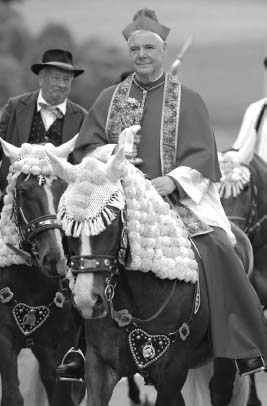ChristianityLeadership, Authority, and Religious Roles |
What is a bishop? Do all Christian churches have them? |
“Bishop” means “overseer” (from the Greek episkopos). Many churches use the episcopal system as their principal administrative structure. Among the churches for which episcopal succession represents an unbroken connection back to the Apostles, the first bishops, are the Catholic, the Orthodox, and the Anglican. Catholic bishops confer as a global body by sending representatives to occasional synods in Rome, and in many countries are organized into national conferences. Orthodox bishops also convene in synods, but usually on a nation-by-nation basis. Anglican bishops meet at the Lambeth Conference every ten years, but the results of their deliberations are not juridically binding. Many of the Methodist churches also have bishops, and there are Lutheran bishops as well. Some smaller churches, such as those in Holiness or Assembly of God traditions, sometimes refer to their founder as a bishop, but they are not linked with any larger episcopal governing body.
Alternative forms of governance are the presbyteral and the congregational. Presbyterian churches are governed by a body called the “session,” elected by the congregation and consisting of ordained clerical and lay presbyters or elders. Local churches join together in a presbytery, and regional presbyteries (never fewer than three) in turn form a synod. Presbyteries also elect members of an overall body called the General Assembly. The congregational structure maintains the complete independence of each local community, but most churches that employ the structure nevertheless come together in national conventions or synods. Baptist churches and those forming the United Church of Christ use this general structure of governance.

A bishop rides horseback at the 2011 Pfingstritt religious procession in Bad Koetzting, Germany. (filmfoto / Shutterstock. com.)
